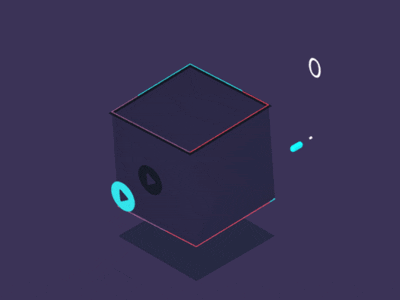AI-Possibility to Reality
The widespread advancement in the field of AI helped organizations to manage the employees and customers in a better way.
For example, the chatbots, meant to serve the purpose of handling the customer’s inquiries and complaints are a source of relief for the employees as well as customers who need not to wait for long for the response from a company. To understand the AI in businesses in detail we must familiarize ourselves with the basic terminology related to it.
Artificial Intelligence
AI is a concept which demonstrates the ability of a machine to think and execute the tasks in a smarter way as humans, using much complex logic in a single frame. Human intelligence forms the fundamental basis to facilitate the design of an AI. The different abilities of humans such as perceiving, reasoning, problem-solving, etc. use analytical skills. A machine when trained to use these skills can work with accuracy and no fatigue.
AI Augmentation
The way the human brain is trained using different stimuli, AI is also trained using historic data. To understand in detail, what happens to the historic data, we must understand different analytics from business perspective. Descriptive Analytics (What happened?) (maximum manual intervention), Diagnostic Analytics (Why did it happen?)(Significant manual intervention), Predictive Analytics (What could happen?)(Correcting the mistakes manually), Prescriptive Analytics (What should we do?), Cognitive Analytics (Cause something to happen)(Fully automated)
Moving beyond these analytics, advanced analytics helps to add knowledge and gives a progressive nature to the AI to make decisions in a holistic way.
Big Data
To train the AI to work in a specific field Big data plays very important role. Big Data is described by the 5 V model.
- Volume-describes the big size of the data
- Velocity-describes the speed at which the data is created, basically the mathematical ratio of quantity and duration of data creation.
- Variety-describes the various heads under which data is created
- Veracity-describes the accuracy of the data, in other words, it tells if the data is reliable or not.
- Value-Transferable nature of data in the useful form
Machine learning and predictive analytics
Technically Machine learning and predictive analytics share similar fundamental structures of complex algorithms with the same objectives of forecasting. The underlying difference between the two is the amount of data involved and human intervention.
Predictive analytics make use of different sets of algorithms to evaluate the viability of the results. It means, because of its probabilistic nature it helps in forecasting the problems along with the prediction of the possible solutions to the problems. One of the applications of Big Data lies in the Fin-tech industry, which helps the organizations to predict if the future bad debt. To get such predictions, it is very important to train the AI with a large amount of data.
On the other hand, in Machine learning, one cannot observe the evolving nature of the data and system adaptations with the new data. ML just focuses on data availability and forecast.
In predictive analytics, human intervention is required to train the AI, but this is not the case of ML.
Methods and techniques for getting the best out of given data
Advanced statistical and Mathematical techniques such as Bayesian theory, Probability distributions, Normal curves, etc. help to extract best out of a given set of data by defining the unique algorithms in coherence with the human expertise and experience. Such algorithms help in the automation of the quality and optimized decision making in business, which in turn results in more focus on profit-making.



 Data Analytics can be complex when you try to understand it. A
Data Analytics can be complex when you try to understand it. A